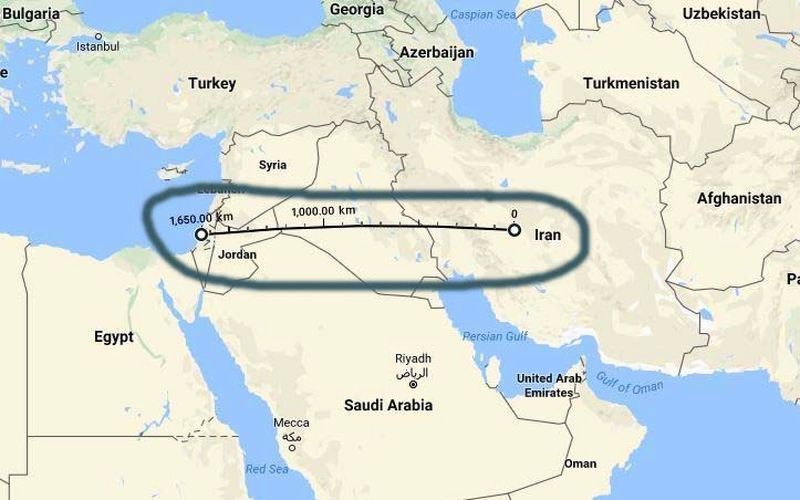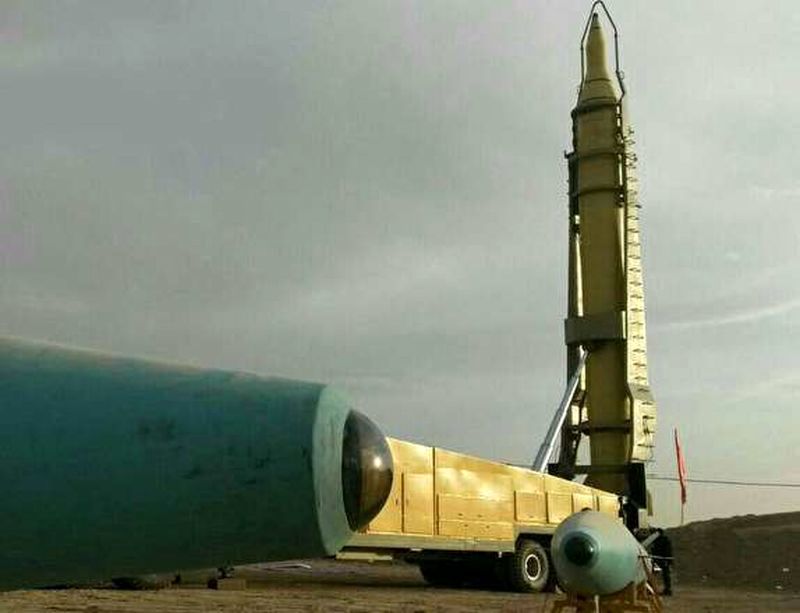Discovering Iran’s Fastest Ballistic Missile + Photo
Rakna: Iran’s missile power is now one of the significant achievements of the Islamic Republic in the field of military technologies and national defense capability.

Today, relying on domestic capabilities and maximizing available resources, Iran’s Armed Forces unveil new and modern missiles in short time intervals. With the introduction of each new missile, Iran’s enemies grow increasingly frustrated at the nation’s progress in defense, further highlighting the Islamic Republic's capabilities in this arena.

Missiles are among the most effective weapons on the battlefield, with the ability to inflict heavy and lethal damage on land, in the air, and at sea. One member of this arsenal is the ballistic missile. A ballistic missile travels most of its path in a curved or parabolic trajectory, hence the term "ballistic," derived from the word "ball."
Ballistic missiles are classified based on their range. The most critical component of a ballistic missile is its propulsion system, which determines its range—ranging from 150 to 5,000 kilometers. Long-range ballistic missiles can exit the Earth’s atmosphere and, after reaching an appropriate altitude, re-enter the atmosphere through freefall, guided accurately to their target.
Speed is one of the most crucial factors in missile design. Speed matters in two key aspects: the time required to prepare the missile for launch—extremely critical in combat scenarios where missiles must be made launch-ready quickly—and the time it takes the missile to reach its target. For instance, the Ghadr missile has a preparation time of approximately 30 minutes, whereas early models of the Shahab missile series required several hours.

In terms of flight speed to the target, the Ghadr missile uses a single-stage solid-fuel engine, reaching speeds of Mach 6 (approximately 8 kilometers per second). This supersonic speed enables the Ghadr to reach its target without being detected by radar systems, thereby outmaneuvering enemy missile defense systems.
The Ghadr missile has an effective range of up to 3,000 kilometers, placing it in the category of long-range missiles. This extended range sends a clear message to the world: any target in the region, and even in Europe, lies within the missile’s reach.

The Ghadr-110 is a refined model of Iran’s Shahab-3 missile. Unlike the Shahab-3, the Ghadr uses a two-stage engine. This is where its unique capability lies: the missile uses liquid fuel in its first stage and solid fuel in its second stage. This innovation was first implemented in 2005, contributing to the missile's classification as long-range.
Another version of the Ghadr missile, known as Ghadr-110A, features a new design with a three-stage engine. It also underwent visible changes, including an increase in length from 17.5 meters to 20 meters.
The Ghadr-110 can easily alter its trajectory mid-flight. This ability allows the missile to evade destruction if detected by the enemy. Its advanced autopilot system and integrated Global Positioning System (GPS) further enhance the missile's accuracy.
One of the distinctive features of ballistic missiles, also present in the Ghadr, is its unique warhead. As mentioned earlier, the Ghadr is a smart missile, capable of changing its path mid-air to escape enemy interception systems. Moreover, its advanced autopilot and GPS system ensure precision targeting.
The installation of "cluster warheads" on long-range Ghadr missiles means that when the missile reaches the vicinity of its target, the warhead opens mid-air, releasing a rain of multiple small bombs over a wide area. These warheads are highly effective against expanded enemy positions, airfield runways, hangars, fighter jets stationed on airstrips, as well as dispersed missile and defense installations on the ground.
"Blast warheads," which are high-explosive warheads, cause massive fires and destruction upon impact and are designed to inflict significant damage.
The Global Security website has noted that missiles in the Ghadr family are ballistic missiles with a range of approximately 2,000 to 2,500 kilometers and a weight of around 25 tons, using solid fuel. This means that if such missiles were deployed in Semnan, they could cover areas as far as the mouth of the Indian Ocean.
Agence France-Presse reported: "The Ghadr missile possesses extensive capabilities, with a range sufficient not only to target Israel but also to strike U.S. bases in the Arab countries of the Persian Gulf region."
The Ghadr missile class represents the strategic capabilities of the Islamic Republic of Iran and significantly reduces the ability of its enemies to threaten or aggress. However, all such claims must be substantiated by action.
Today, the success of Iranian scientists and engineers has been proven to all. Iran has become self-sufficient in many fields, and hostile sanctions imposed on the country have failed to halt its progress. Tehran has continued its path independently in the defense sector.
In recent years, our country has succeeded in designing and producing a wide range of ballistic missiles with varying features to counter all types of threats, making Iran one of the major missile powers in the world and in the West Asian region.
Military and defense capabilities are undoubtedly one of the key pillars of the Islamic Republic of Iran’s military strategy to confront threats. Based on various power indicators, missile capability remains one of the most important deterrent factors against military aggression—a capability that Iran possesses to a significant degree.
Send Comments